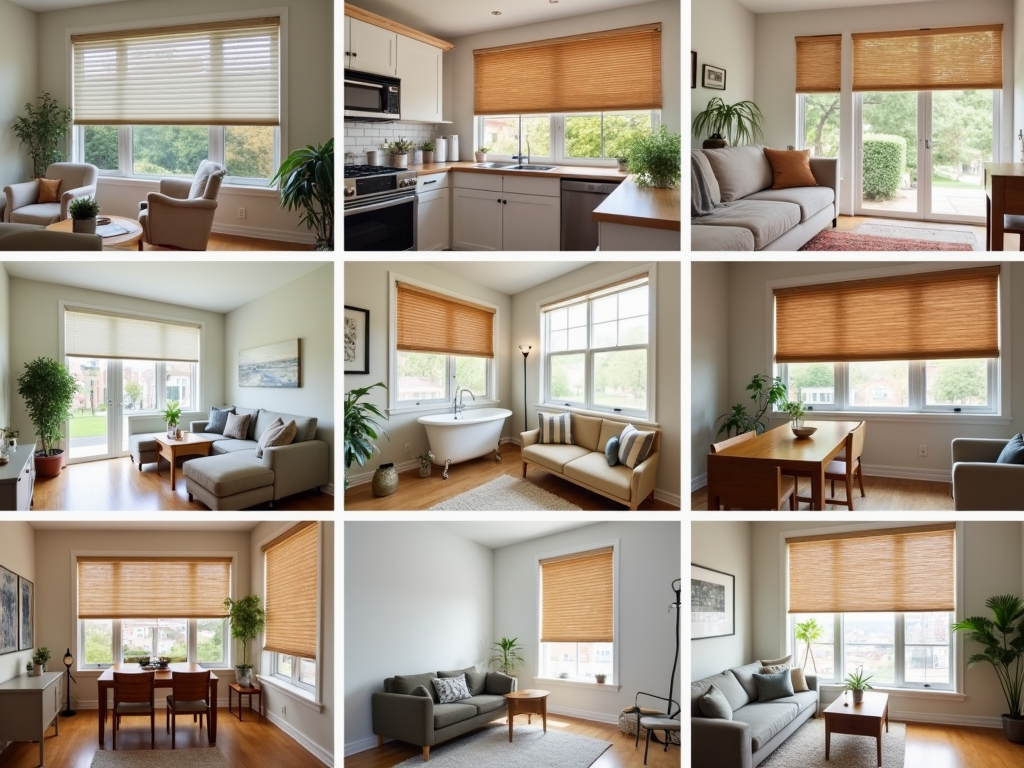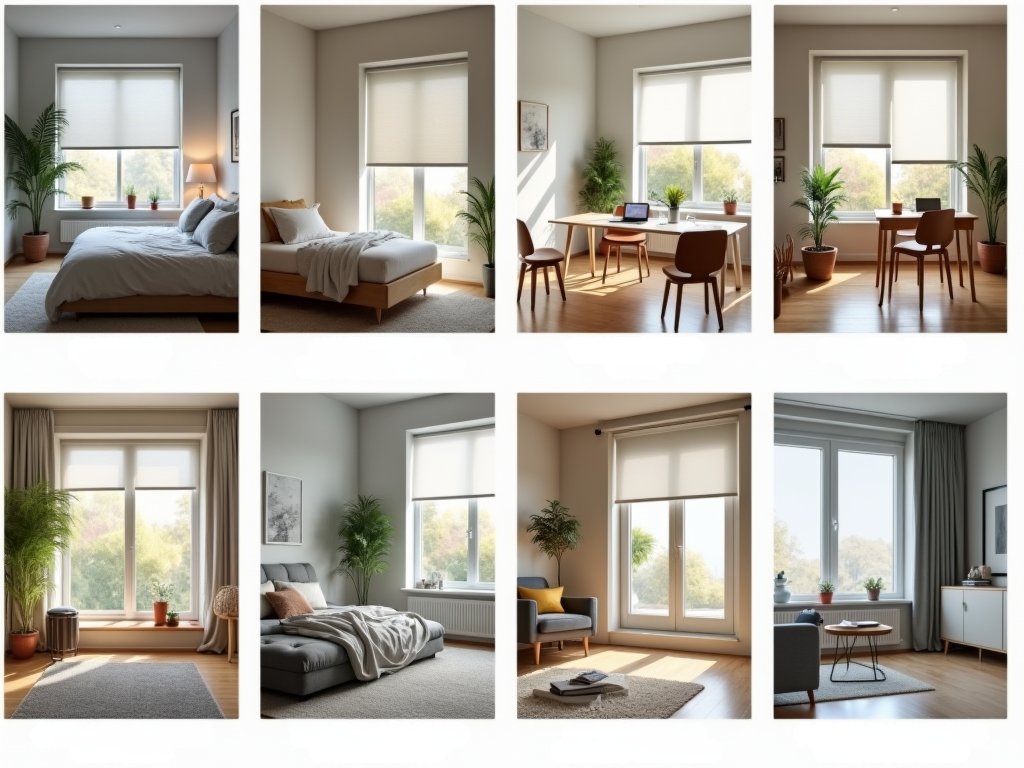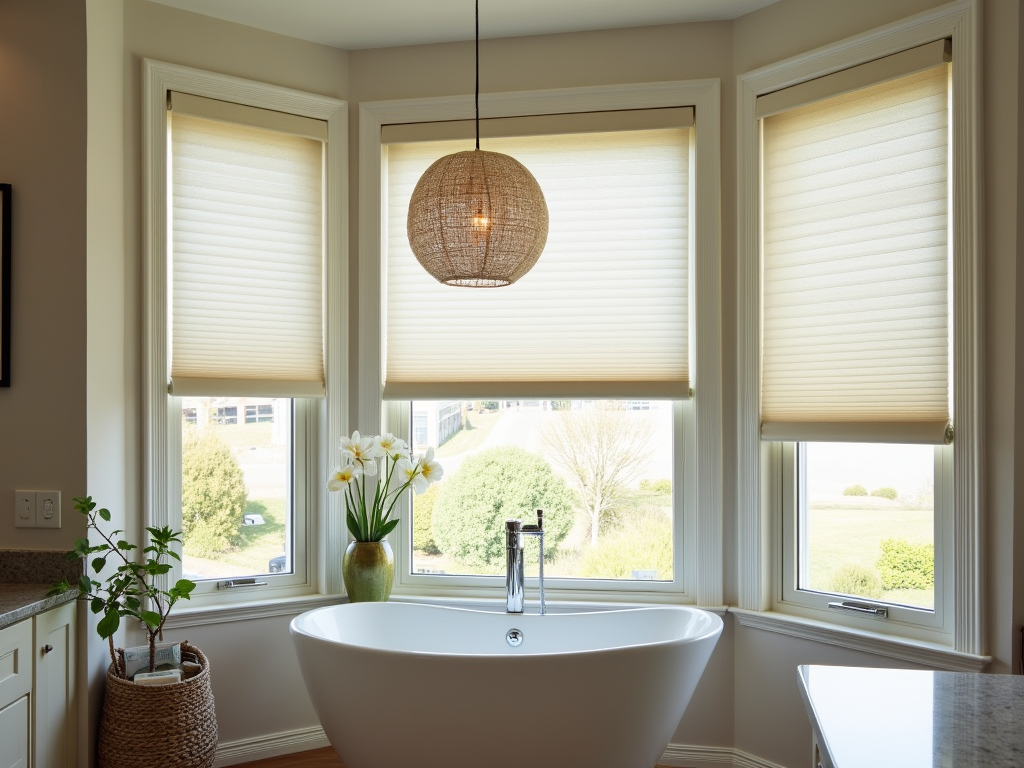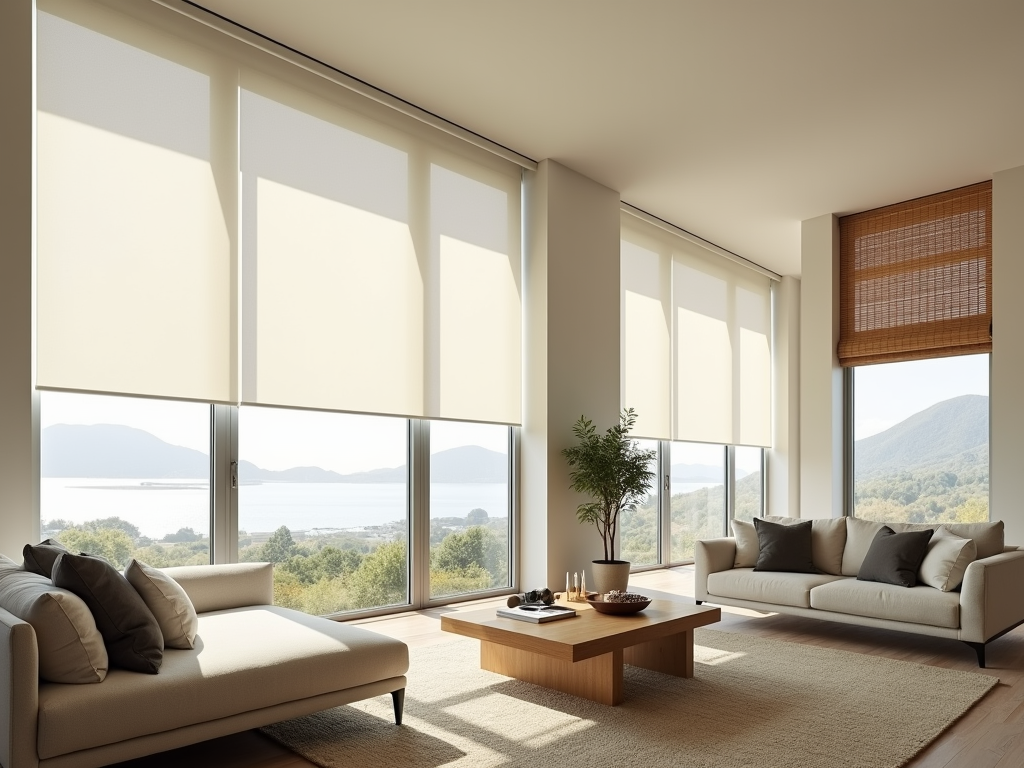
Key Takeaways
- Faux wood blinds stand out for their wood-like appearance, robust nature, and resistance to moisture, making them ideal for spaces such as bathrooms.
- They enhance energy efficiency while remaining effective in wet locations like kitchens and bathrooms.
- Aluminum blinds are well-loved for their sleek, modern look and high durability, particularly in workspaces or kitchens.
- The demand for bamboo blinds is growing thanks to their sustainable benefits and stylish, natural aesthetic.
- Roller and Venetian blinds deliver versatile, clean designs, offering compatibility with both traditional and modern interior styles.
The Blind Materials That Are Stealing the Spotlight
Aluminum blinds are a favorite for their clean, modern look and resilience. They handle wear well and are ideal for kitchens or offices, but they might not give the cozy vibe you’d get from wood. If aesthetics rank high, wood blinds are stunning with their natural elegance, though they need more care and may not suit humid areas.
Faux wood blinds could be your sweet spot. They mimic the warmth of wood but resist moisture and warping, making them energy-efficient blinds for areas like bathrooms. Vinyl blinds stand out as budget-friendly blinds that don’t skimp on durability or water resistance, perfect for renters.
For those craving sustainable options, bamboo blinds bring eco-friendly blinds into focus. They’re stylish, filter light gently, and pair well with earthy interiors. Each material offers distinct advantages, from budget considerations to light control, so you’ve got options for any space.
For further ideas, check out some of the current trends in window blinds.

Timeless Styles That Fit Every Room
Venetian blinds stand out for their versatility, making them perfect for spaces like living rooms or offices. With horizontal slats, you can control light and privacy with ease. Vertical blinds are another classic, often used for larger windows or sliding doors due to their practical, space-saving design. They’re fantastic for creating clean, elongated lines in a room.
Roller blinds cater to a minimalist look. These sleek window treatments are great for anyone preferring a modern, uncluttered vibe. Meanwhile, mini blinds and their smaller counterpart, micro blinds, offer budget-friendly yet functional options. Mini blinds are ideal for most standard windows, while the finer slats of micro blinds work best in smaller spaces.
Modern enhancements, like cordless blinds, are child-safe and hassle-free. For a touch of convenience, motorized blinds enable remote or app control. Options abound, from slat sizes to materials, ensuring a solution for every window style and size.
Why Functionality Drives Decisions
People often pick window blinds not just because they look good but because of what they do. Privacy is a big deal for bedrooms and bathrooms, which is why privacy blinds are a go-to choice for many homeowners. Blackout blinds are another favorite, especially for bedrooms—they block out all light, making them perfect for a restful sleep or keeping out harsh daylight during a midday nap.
For spaces where you still want some natural light but without glare, light-filtering blinds work beautifully. They soften the sunlight, making living rooms or home offices more inviting. Then there’s insulation. Insulating blinds help cut down on energy bills by keeping the house cooler in summer or warmer in winter.
Safety also plays a huge role, particularly for families with little ones. Child-safe blinds, especially cordless options, have been getting a lot of attention. They’re as functional as traditional blinds but remove any risk tied to dangling cords.
Motorized blinds are another game-changer. You can adjust them at the touch of a button, or even program them to move based on the time of day. This option blends convenience with sleek design, drawing more and more attention from tech-savvy individuals and families who value ease of use.
If you’re curious about the specific styles dominating right now, you might find this breakdown of latest window blinds types helpful. It covers exactly what’s catching the attention of homeowners.

Picking blinds for different rooms comes down to blending practicality and aesthetics. Each space in a home demands something unique, whether that’s durability, privacy, or energy savings.
Bathroom Blinds: Durable and Moisture-Resistant
In bathrooms, I often go for vinyl or faux wood blinds. They’re resistant to humidity and won’t warp over time. For better privacy, look for blinds with a tight closure while still letting in some natural light.
Bedroom Blinds: Comfort and Light Control
For bedrooms, cellular shades are fantastic. Not only are they energy-efficient, but they also offer excellent light-blocking options for better sleep. They’re a perfect example of combining function and style, especially with blackout options.
Kitchen Blinds: Easy-Clean and Stylish
In kitchens, roller blinds stand out. Their sleek design fits various styles, and they’re easy to clean, making them perfect for spaces prone to grease or splashes. Explore more about kitchen blinds designed for everyday use.

Trending Now: The Rise of Smart and Eco-Friendly Blinds
Smart blinds are making waves for tech fans who want convenience and style in their homes. With options like motorized blinds that connect to apps or respond to voice commands, adjusting lighting has never been simpler. Brands like IKEA’s FYRTUR and Bali Smart Shades lead the pack, offering seamless designs that integrate with smart homes. I’d recommend these if you’re after hands-free adjustments and versatile scheduling.
Minimalism is driving a shift in design. Sleek, clean lines and neutral tones make modern blinds a favorite for those updating contemporary interiors. They blend effortlessly with open floor plans and keep rooms feeling fresh and uncluttered. This trend isn’t just about looks; it’s about creating a calm, airy feel in your space.
For the eco-conscious, bamboo blinds are surging in popularity. These sustainable blinds are made from natural, fast-growing materials, letting you feel good about your choices while adding texture and warmth to your home. Bamboo’s natural look contrasts beautifully with today’s minimalist furniture, making it a versatile choice.
These trends highlight how personal preferences shape the market. Whether you’re drawn to high-tech motorized blinds or the natural charm of bamboo, there’s an option for every taste. For inspiration or a detailed comparison, check out this helpful guide on the latest window blinds types.

Leading Products That Dominate the Market
Faux wood blinds by Levolor are a classic choice. They pair the timeless look of real wood with the durability of synthetic materials. These blinds resist moisture, making them ideal for bathrooms or kitchens. Prices typically range between $50 and $100 per window, depending on size, and you can find them at stores like Home Depot or Lowe’s.
For energy-efficient blinds, Bali Cellular Shades are a smart option. Their honeycomb design traps air, helping lower energy costs. Whether for summer heat or winter chills, these shades work year-round. Depending on customizations, they range from $40 to $200 each. Check out major retailers or buy directly from Bali’s website.
On a budget, IKEA’s FYRTUR motorized blinds stand out. Affordable and sleek, they combine convenience and affordability. These come in around $129 each and are easy to grab online or in IKEA stores.
Sources:
Select Blinds website
Blindster website
Lowe’s website
Home Depot website
JCPenney website
“Best Blinds of 2024”
“Top 10 Blinds for Your Home”
“Ultimate Guide to Buying Blinds”
